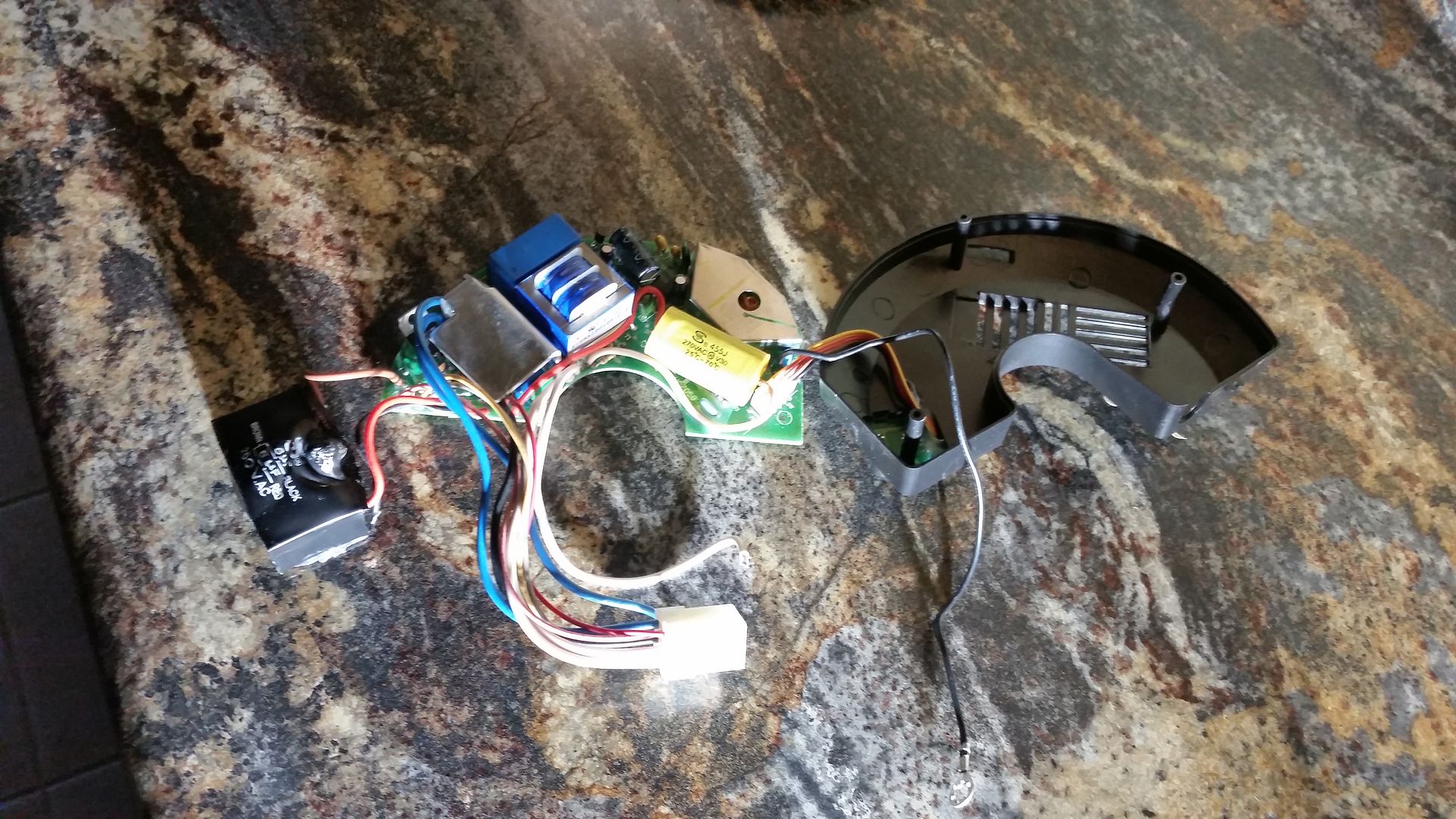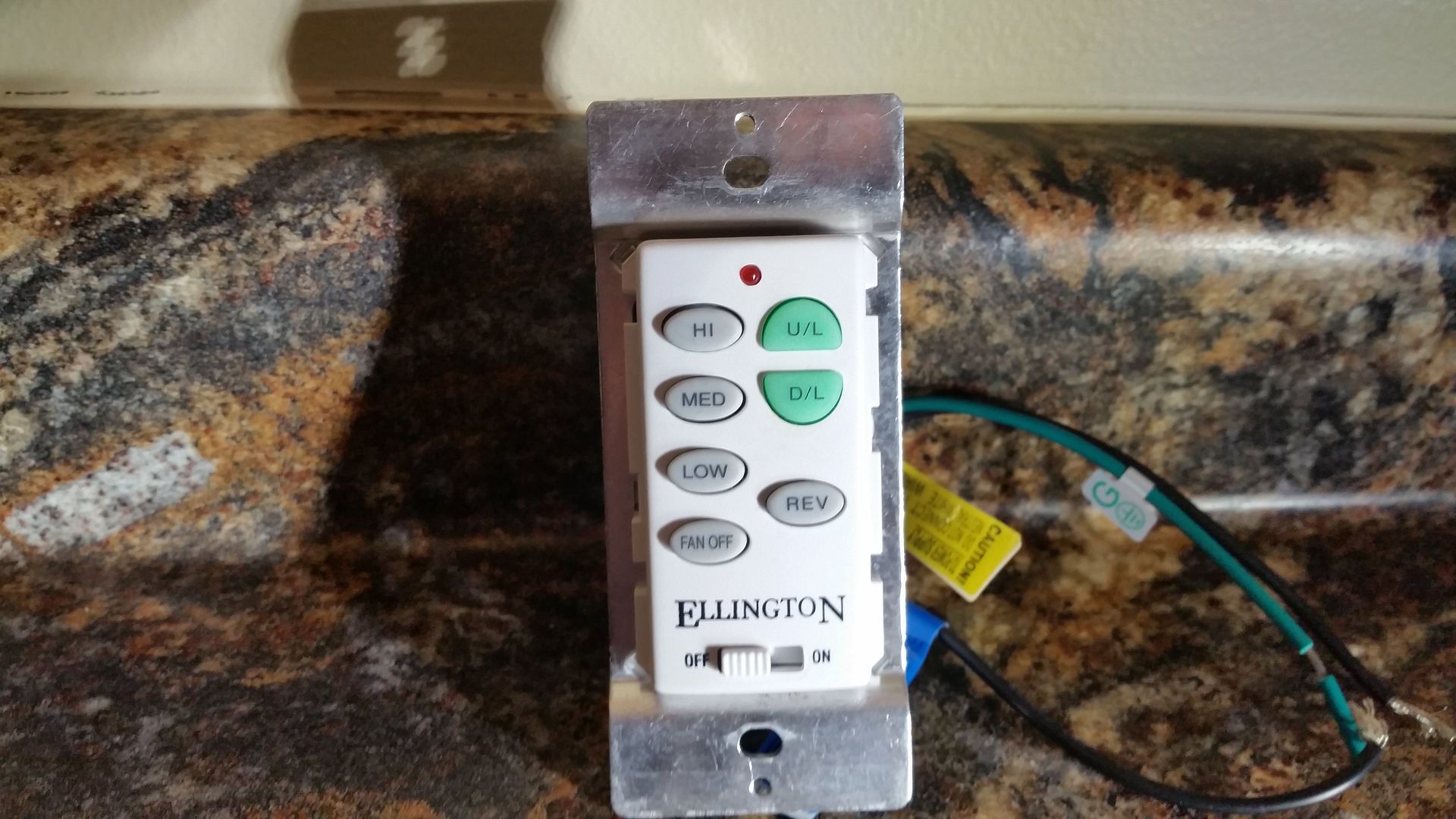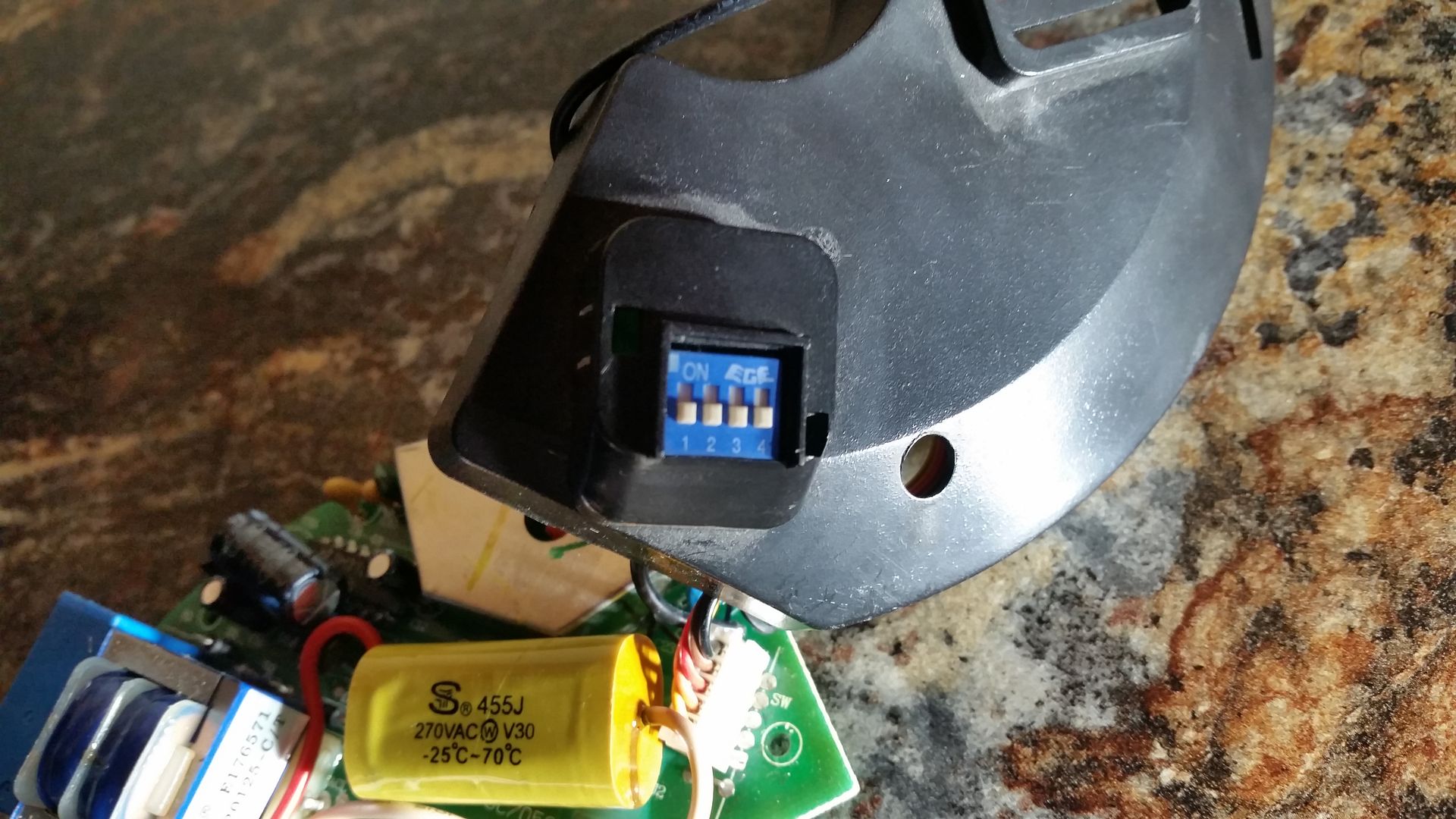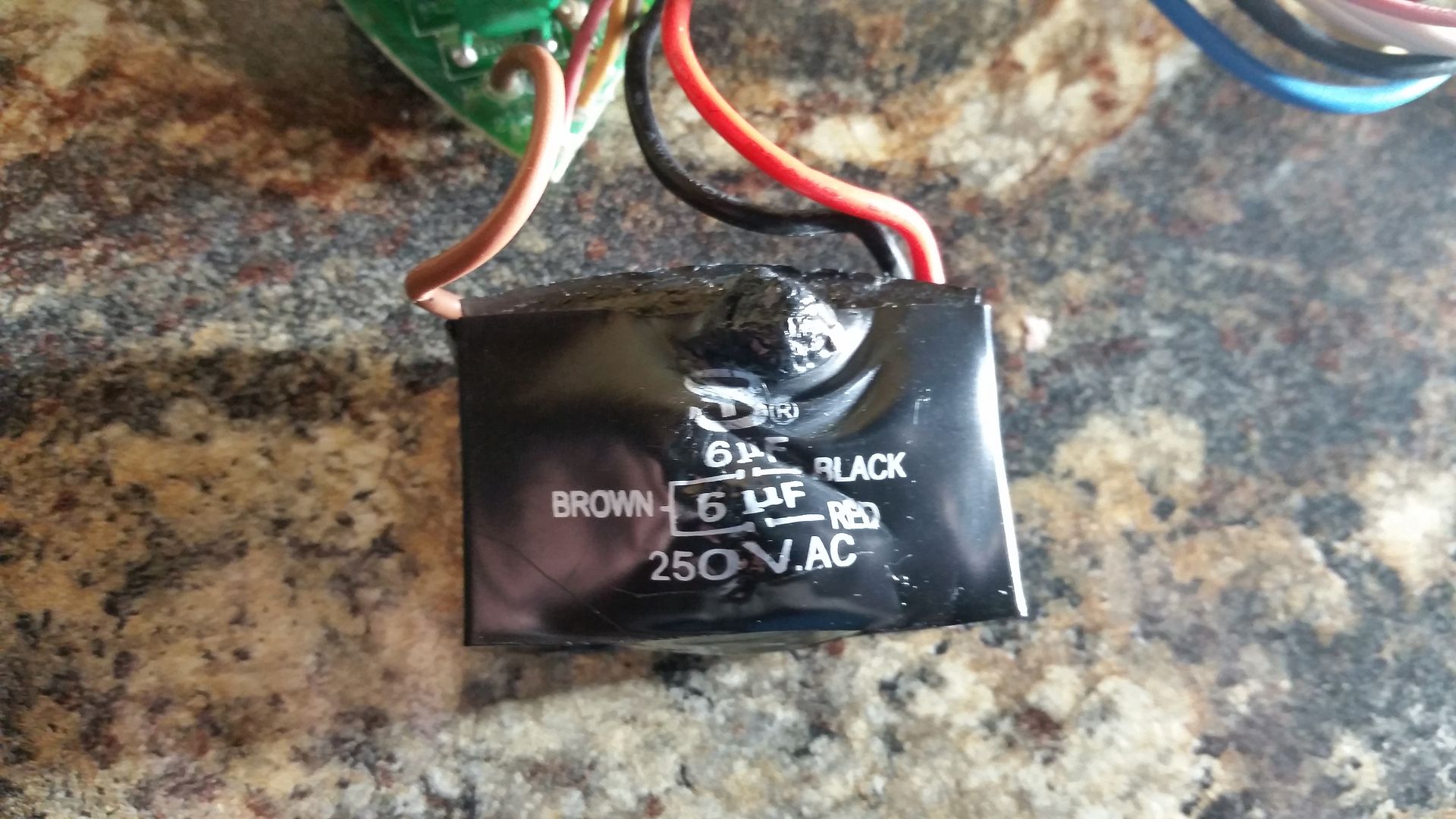- Location
- Tennessee NEC:2017
- Occupation
- Semi-Retired Electrician
I have been working on a ceiling fan w/light that has a built in remote with wall control. It turns out the receiver on the fan is bad, or part of it anyway. You can see that the capacitor is bad. The problem is the capacitor is part of a control board. The fan has a lifetime warranty so I had the lighting place order the parts. When the parts came in they weren't the same as the OEM parts. What they sent was a solid state fan speed control. From what I can find out that is what replaces the control board. What I don't know is unless it has a capacitor built in then one needs to be added. The wiring diagram doesn't show a capacitor but something has to control the speeds.
I connected the new parts up on the floor as the fan is mounted 14' up and I didn't want to hang/rehang the fan. I was able to get the new wall control to work the lights but not the fan. I've put in some pictures that I hope will help. I'll describe what each is and what is new vs old. What I need to know is do I need to add a capacitor or is there a way to wire this if the new receiver has a built in cap.
Old receiver that controls the fan/lights

Wall control, this actually is the same as the old. Only difference is the old receiver had dip switches that you set to match the wall control. This new wall control also has dip switches but not the new receiver. Supposedly it is a "learning" receiver & wall control

Showing the dip switches on old receiver

showing bad capacitor

New receiver showing the wiring diagram. The receiver has line hot, line neutral, load to motor, load neutral, upper light, & lower light. With nothing for a capacitor. The fan motor has a gray, pink/purple, yellow, & red coming out. I think that's right but I forgot to take a picture of the fan motor.

So if anyone can help me out here I would appreciate it.
I connected the new parts up on the floor as the fan is mounted 14' up and I didn't want to hang/rehang the fan. I was able to get the new wall control to work the lights but not the fan. I've put in some pictures that I hope will help. I'll describe what each is and what is new vs old. What I need to know is do I need to add a capacitor or is there a way to wire this if the new receiver has a built in cap.
Old receiver that controls the fan/lights

Wall control, this actually is the same as the old. Only difference is the old receiver had dip switches that you set to match the wall control. This new wall control also has dip switches but not the new receiver. Supposedly it is a "learning" receiver & wall control

Showing the dip switches on old receiver

showing bad capacitor

New receiver showing the wiring diagram. The receiver has line hot, line neutral, load to motor, load neutral, upper light, & lower light. With nothing for a capacitor. The fan motor has a gray, pink/purple, yellow, & red coming out. I think that's right but I forgot to take a picture of the fan motor.

So if anyone can help me out here I would appreciate it.

